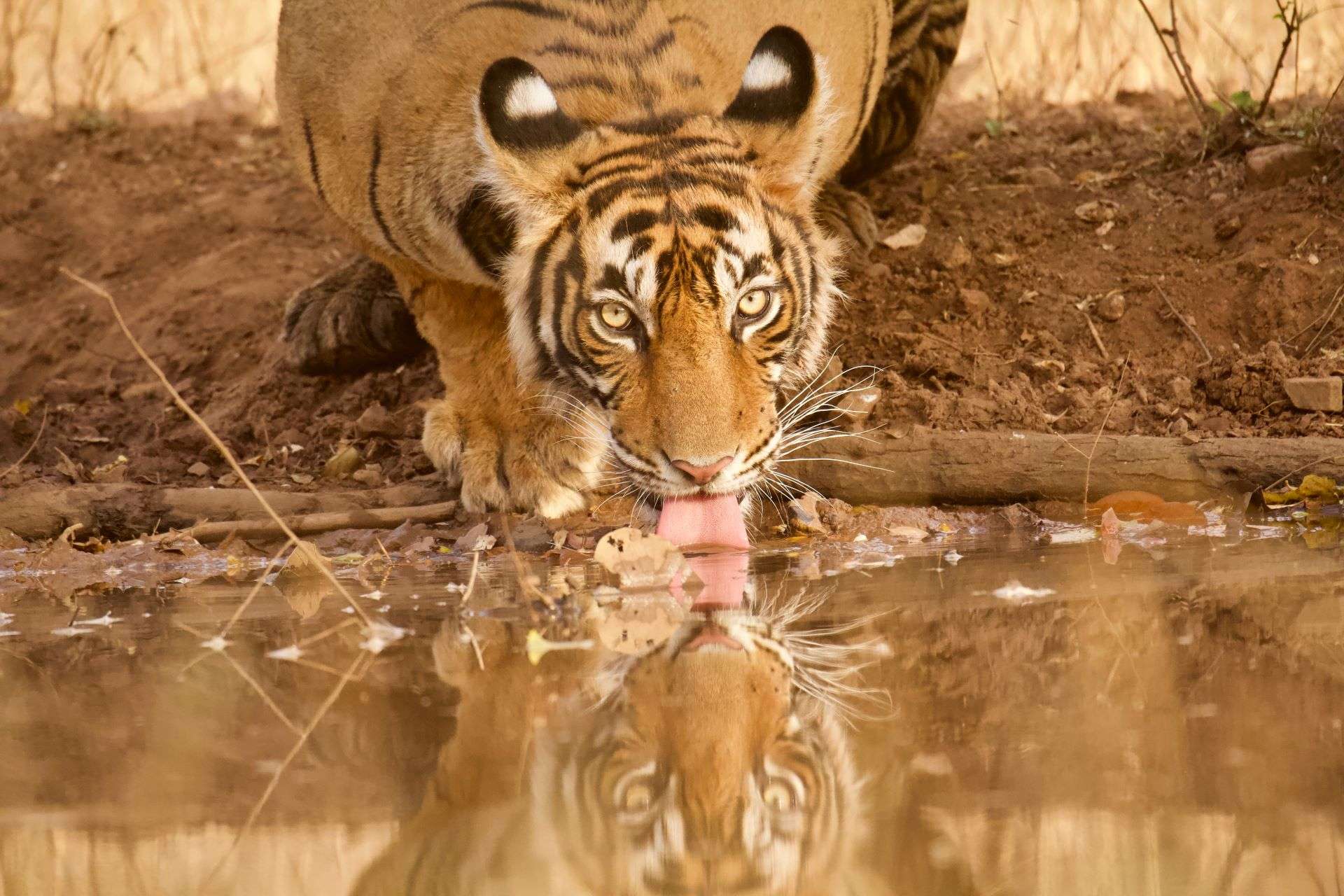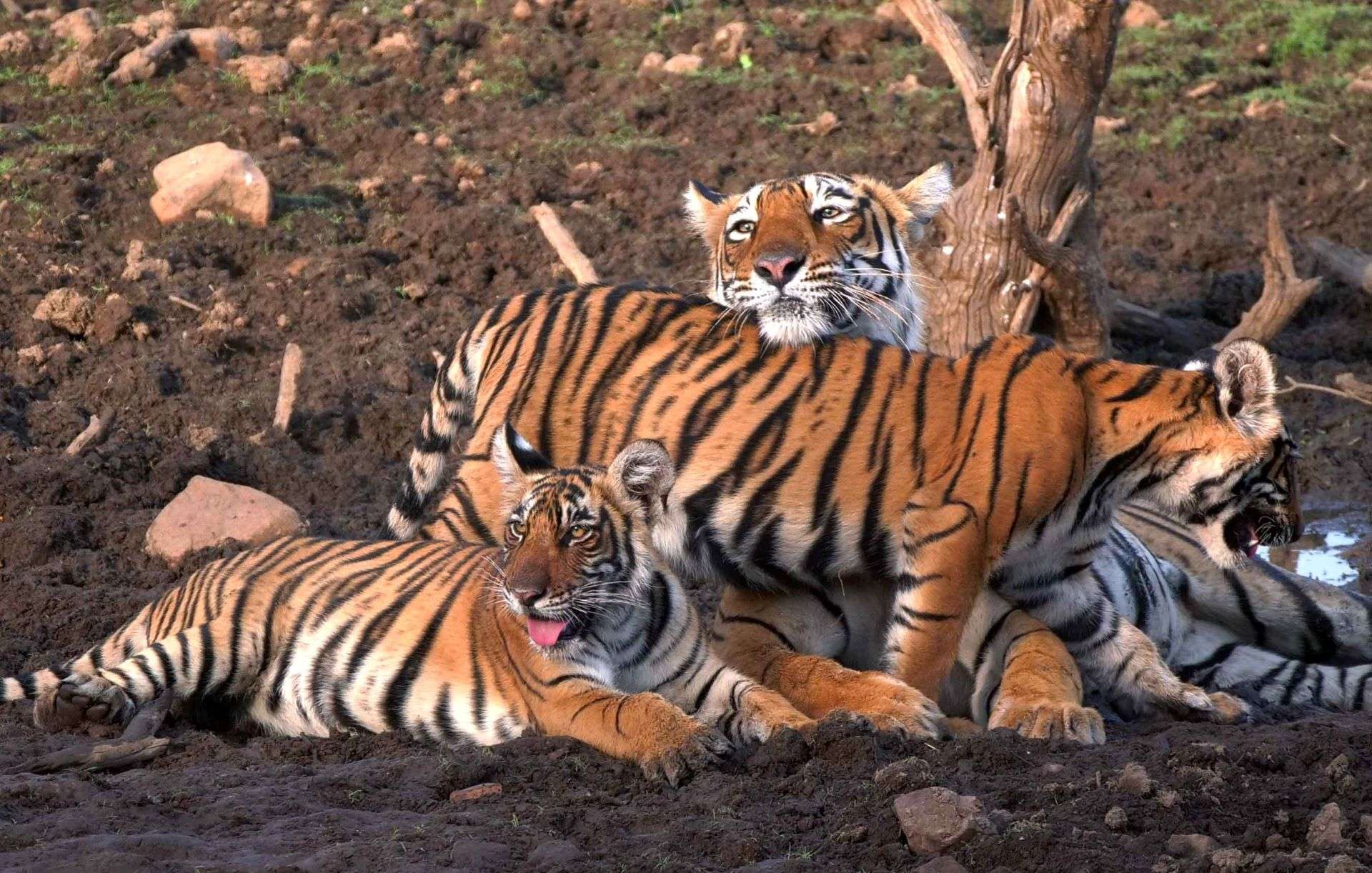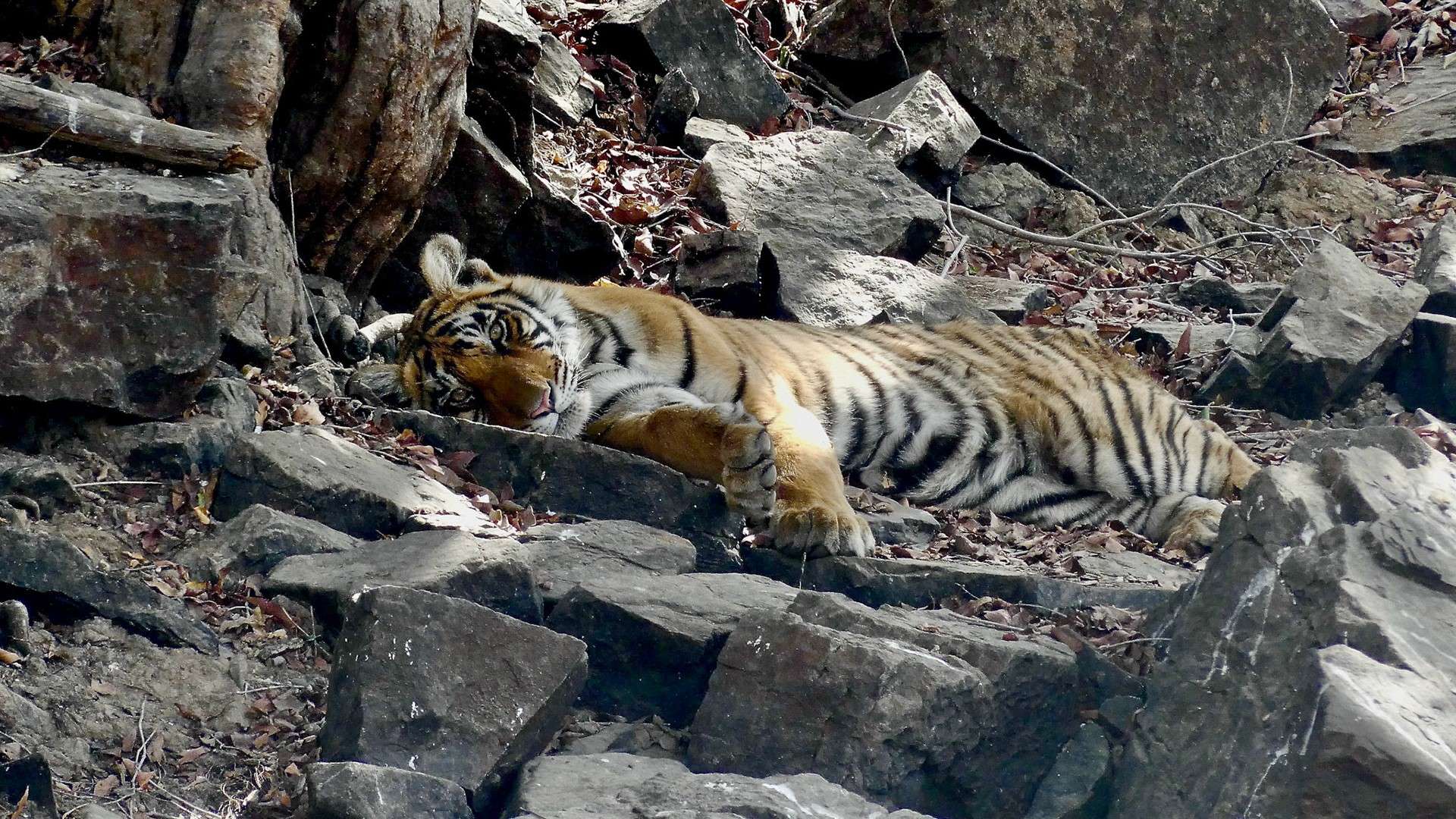As the largest member of the cat family, tigers are compellingly powerful, stealthy and have been one of nature’s most feared predators for roughly two million years. But in just the past 150 years, the tiger’s range has shrunk by nearly 95%, and according to World Wildlife Fund, the population in the wild is now only around 3,890 tigers. Find out how conservationists aim to double that number through protection efforts fueled in part by eco-tourism.
Tigers: Facing Extinction
Tigers are native to Asia, but their range today is much smaller than in the past. It doesn’t help that they are native to many places with huge human populations that are growing exponentially. Their range includes Southeast Asia, India (roughly 3,000 of the world’s wild tigers are found in India), western China and some parts of Russia, with small breeding populations in Bhutan, Bangladesh, India, Malaysia, Indonesia, Thailand, Russia and Nepal.
There is a persistent myth that wild tigers can be found in Africa, but that’s not based on scientific fact. Tigers, lions, leopards and jaguars are all part of the Felidae family of cats, which did originate in Africa a couple of million years ago. But since then, an offshoot of Felidae migrated east toward Asia, where those cats evolved into the orange-, black-, and white-striped creatures we know and love today. Once they established populations throughout Asia, tigers never returned to Africa. They can only be found there in zoos, special reserves and in private residences where they are sometimes unfortunately kept as pets.

© Conan Dumenil
Sadly, three subspecies of tiger are already extinct: the Bali tiger (Panthera tigris balica), the Caspian tiger (Panthera tigris virgata) and the Javan tiger (Panthera tigris sondaica). One species, the South China tiger (Panthera tigris amoyensis), is thought only to survive in captivity.
The other five species of tigers (Sumatran, Amur/Siberian, Bengal, Indochinese and Malayan tigers) are endangered. Some of the biggest threats to their survival include illegal poaching, loss of habitat due to agriculture and urbanization, and reduction in prey availability. It is the use of their body parts for amulets and traditional ‘medicine’ that is driving the poaching trade, as well as the astronomical price their gorgeous pelts fetch on the black market.
But there’s hope on the horizon. Global Tiger Day is celebrated every year on July 29 as a way to raise awareness about this magnificent-but-endangered big cat. The day was founded in 2010—a Year of the Tiger in the Chinese zodiac calendar—at the Saint Petersburg Tiger Summit. The world’s 13 tiger-range countries (Bangladesh, Bhutan, Cambodia, China, India, Indonesia, Lao PDR, Malaysia, Myanmar, Nepal, Russia, Thailand and Viet Nam) came together to create Tx2: a global initiative with the goal to double the number of wild tigers by the year 2022—the next Year of the Tiger. Many well-known animal organizations such as WWF, IFAW and the Smithsonian Institute are involved with TX2 and Global Tiger Day.
4 Places to Travel for Tigers
1. India
India holds the largest population of tigers in the world for a reason. Project Tiger, a conservation program initiated by Indira Gandhi, has been active there since 1973, and it is credited with the formation of more than 25 highly monitored tiger reserves on reclaimed lands where human development is banned. The effort has helped to triple the number of wild Bengal tigers since the early 70s.
Bengal tigers are incredible beasts that can reach up to 13 feet in length and weigh up to 660 pounds. Despite their huge size, they can reach speeds of about 35 to 40 miles per hour. Like most other cats, Bengal tigers are solitary hunters, sneaking up on their prey thanks to their stripy camouflage and overpowering them, using their formidable strength and weight to knock larger animals off balance. A group of tigers, or even just a momma with her cubs, is called an ambush.

In terms of natural habitat, tigers like areas with dense cover, such as forests with access to water and plenty of prey. On our Nat Hab Grand India Wildlife Adventure, we travel by 4×4 through native territory of the Bengal tiger. An essential stop is Bandhavgarh National Park, which is renowned for having one of the country’s highest concentrations of Bengal tigers. Originally established as a national park in 1968, Bandhavgarh was declared a protected tiger reserve in 1993. At only 444 square miles, it is a relatively small park and offers travelers a pretty solid chance of encountering Bengal tigers.
Meanwhile, on our India Tiger Quest, we visit Ranthambore National Park in eastern Rajasthan—legendary tiger country. During this strategically timed summer trip, visitors are fewer and tigers less elusive, as they venture out of the dry underbrush multiple times each day to quench their thirst at waterholes.
2. Nepal
Conservation travel is integral to protecting wildlife, and our Nat Hab trips directly benefit the continued existence of the magnificent tigers. On our Wild & Ancient Himalaya Adventure through Nepal and Bhutan, we again have the opportunity to try to spot the Bengal tiger. Chitwan National Park in Nepal was established in 1973 as Nepal’s first national park, and it was named a World Heritage Site by UNESCO in 1984. It covers 360 square miles of subtropical lowlands where, conditions permitting, we can track tigers with our Expedition Leader and a local guide. While there is a much smaller population of Bengal tigers here than in India, the latest census suggests there are around 130 tigers who currently call the park home.
And although we won’t see tigers on the Bhutan portion of the trip, we do visit Taktsang Monastery, also known as the “Tiger’s Nest,” a complex of 17th-century temples that clings to the side of a sheer cliff that rises nearly 3,000 feet above the valley floor. The monastery’s name comes from the story of Guru Rinpoche, the mystic who brought Buddhism from India to Bhutan in the 8th century. He reportedly landed here on the back of a flying tigress and stayed to meditate in a cave for three months.

Taktsang Monastery, also known as the “Tiger’s Nest,” in Bhutan. © Maynard Davis
3. Indonesia
For those with their sights set on seeing a Sumatran tiger in the wild, Kerinci Seblat National Park is one of the best places in the world to do so. It spans the coastal plains of West Sumatra in Indonesia and covers an area twice the size of Bali. The Sumatran tiger population here numbers around 200 cats.
4. Russia
If the Siberian or Amur tigers capture your interest, Zov Tigra National Park (meaning “roar of the tiger”) in the Russian Far East was the first national park created with the express intention of protecting this tiger species. Only around 10 tigers reside in the protected space, which covers a total of 200 hectares.
Tiger Tourism for Conservation—Not Exploitation
There are always varying viewpoints about the ethics surrounding wildlife tourism. Depending on how it is managed, it can either exploit wildlife or be a viable avenue for raising awareness, protecting fragile populations and rehabilitating species. As Travel Operators for Tigers (TOFT) states very clearly, “Well-conceived, well-planned and well-managed tourism is a critical tool in wildlife conservation, rural and community development and sustainable livelihoods.”
But how can a traveler who wants to see tigers in the wild know how to spot “well-managed” tourism?

© Harry Bosen
First of all, never participate in a tour that allows visitors to interact with the tigers in a physical way. There are a lot of disreputable places around the globe that continually breed captive tigers in order to produce cubs that are then snatched away from their mothers at just a couple days old and bottle fed to train them to ‘socialize’ with people. Then they are exploited in what are called ‘pay-to-play’ schemes, where tourists are charged a fee to take their picture with a tiger or feed a baby cub. But, because cubs quickly become too large and dangerous for the public to have direct contact with, what was once a lucrative money-making baby quickly morphs into a huge liability, and at around 12 weeks old, the cats are usually either given away to unqualified people or roadside zoos, euthanized and tossed, or killed to sell their parts.
For conservation tourism to work, it must be done in a way that minimizes damage to habitats, prevents unnecessary stress on the animals and generates concrete benefits to both conservation programs and nearby communities. These are the principles we rigorously adhere to for all of our Nat Hab wildlife trips, so you can be secure in the knowledge that your tiger trip is helping protect these phenomenal felines.

